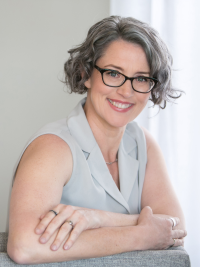Margaret Price: Transforming Access


COLUMBUS, Ohio (2021) -- Ask Ohio State's Margaret Price the question, "What is accessibility?" and you'll get an answer that goes beyond neat definitions. "Access is not something you achieve and then say, 'Look! I made an accessible space; there's the interpreter, there's the ramp, we're good to go,'" she says. "Access is unfolding, it's relational, it's not something you finish--it's very much a practice."
An associate professor in the Department of English and the director of its Disability Studies Program, Price servied on Climate Changing's faculty advisory committee, a group of five professors from a range of academic disciplines whose creative thinking on themes of accessibility, shared space, and the future of institutions like museums informed the exhibition and its related programming in profound ways.
Since coming to Ohio State in 2016, Price has worked with colleagues on the Transformative Access Project, an initiative that reimagines access as a collective process focusing on race, ethnicity, gender, sexuality, disability, and class. "Transformative access is more than who can get in the door safely and comfortably," she says. Quoting leading disability theorist Tanya Titchkosky, she adds, it's "an interpretive relation between bodies."
Price's forthcoming book Crip Spacetime, which grew out of a study of disabled university faculty, incorporates principles of transformative access and draws on rhetorical theory, critical geography, and architecture to forge a new theory about accessibility in higher education.
Though her findings target university campuses, they also apply to museums. So what, to Price, makes a museum accessible? "The absolute number one, nonnegotiable thing is to have an engaged group of users/designers who are constantly practicing transformative access for and around that space, "Price says. "The museum could have 20 steps up to the front door, and I would still think that the users/designers who are engaged in a constant practice of access would be more important."
This article was written by Mary Abowd and was originally published in the Spring 2021 edition of In Practice.
To learn more about Price's work with the Climate Changing exhibition, including an audio description project completed by her spring 2021 graduate seminar, check out the Wexner Center for the Arts blog.
